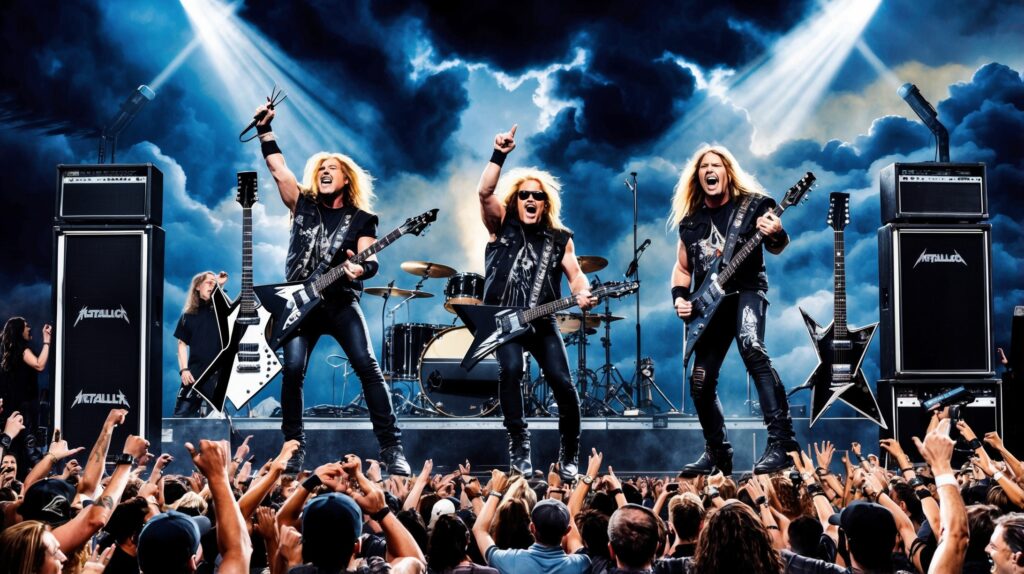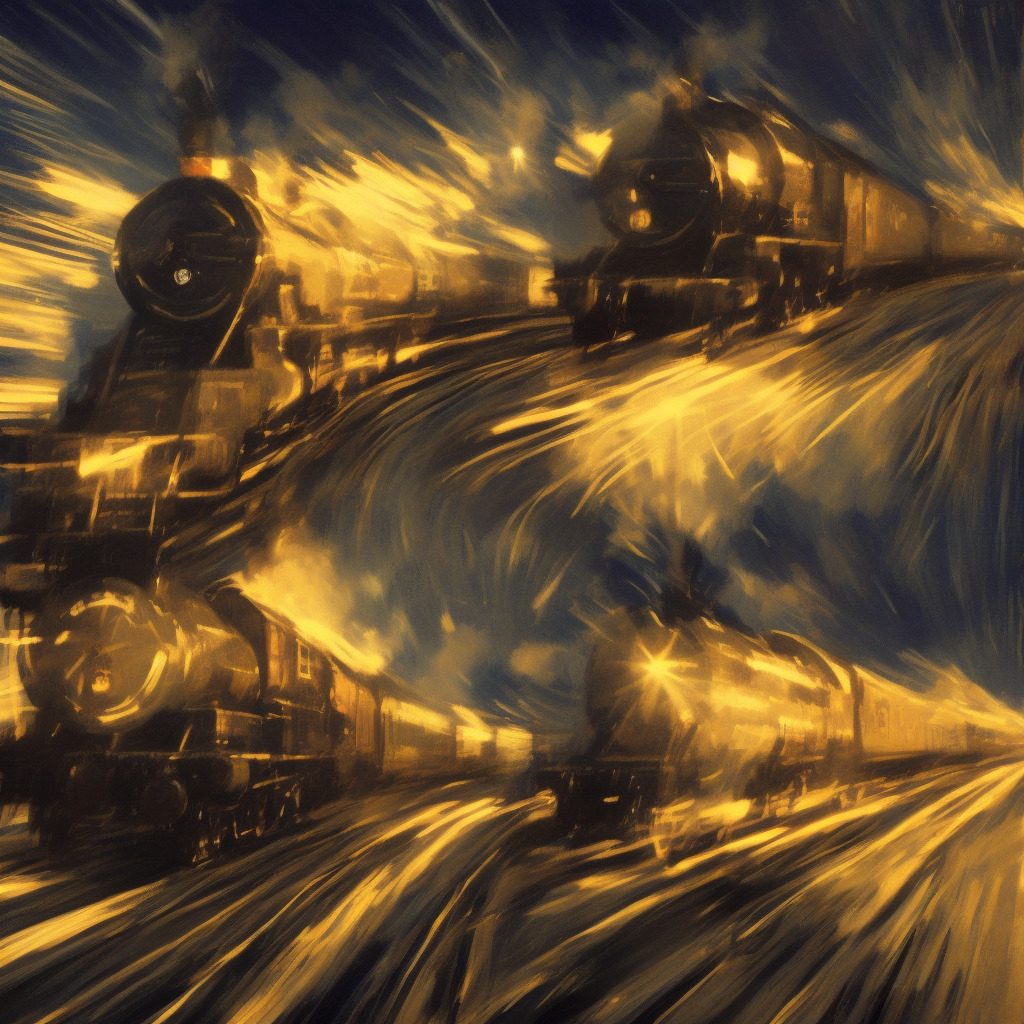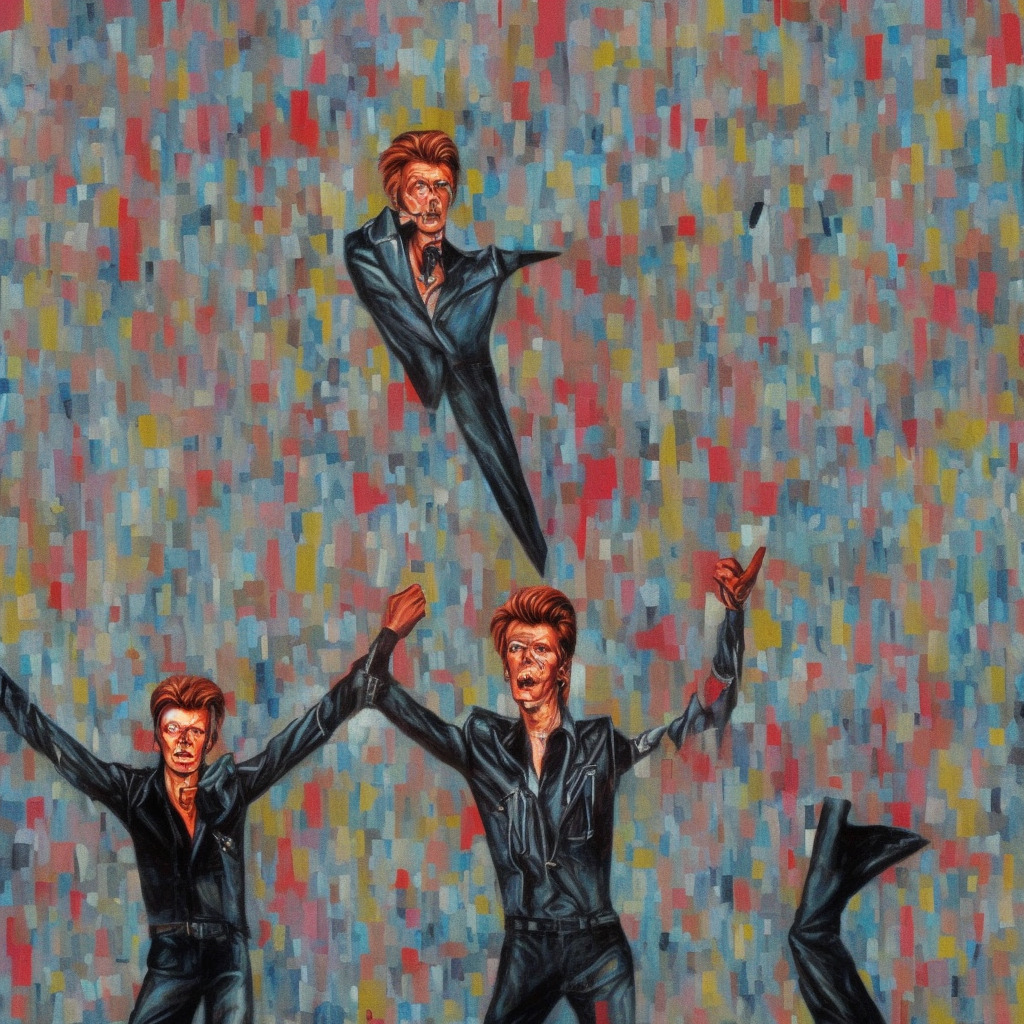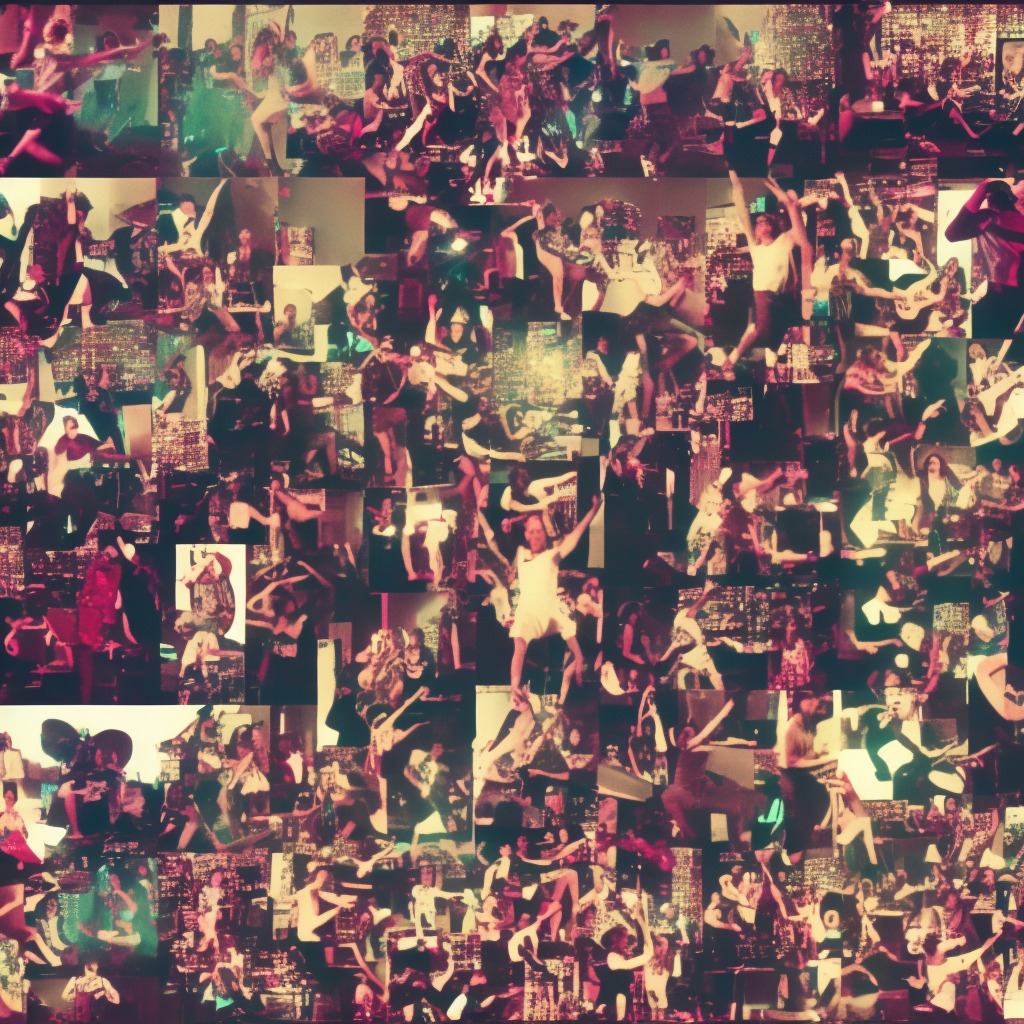Metallica: Pioneers of Metal with an Enduring Legacy
Explore Metallica’s journey to becoming a pioneering force in heavy metal, focusing on their significant contributions including the creation of the iconic track “For Whom the Bell Tolls.”
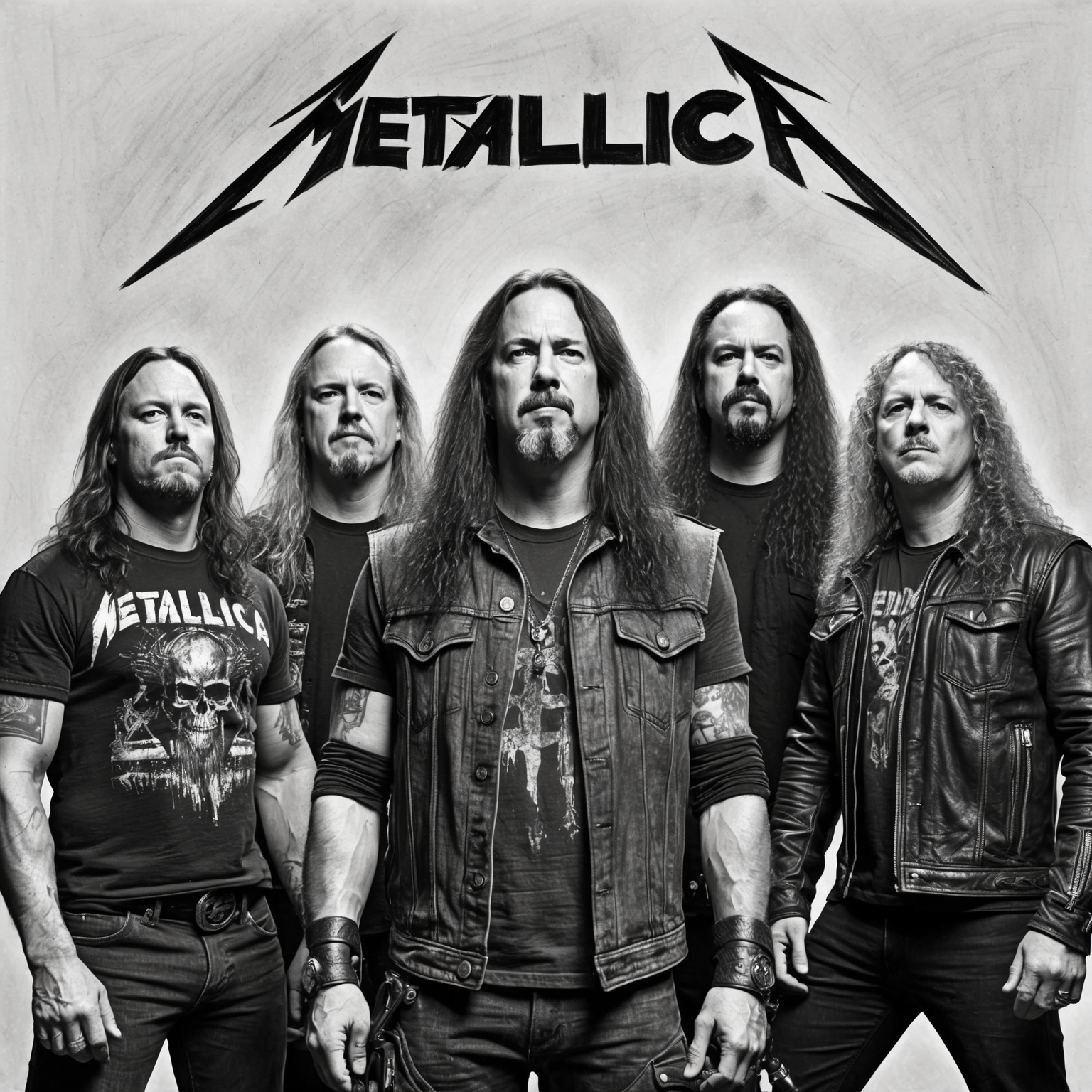
Metallica is an American heavy metal band that has become a defining figure in the world of rock music, particularly through their raw and explosive sound that has captivated audiences for decades. Formed in 1981 by drummer Lars Ulrich and guitarist/vocalist James Hetfield, the band established its legendary status with a string of groundbreaking albums. One of their most iconic tracks, “For Whom the Bell Tolls,” stands as a testament to the band’s creative genius and profound impact on the genre.
In their early years, Metallica’s journey was characterized by relentless determination and a passion for pushing the boundaries of heavy metal. James Hetfield’s gritty vocal delivery, combined with Lars Ulrich’s thunderous drumming, and the blistering guitar riffs of Kirk Hammett, created a signature sound that both challenged and energized the music scene of the 1980s. Cliff Burton, the band’s bassist during the recording of “For Whom the Bell Tolls,” also played an instrumental role, infusing the band’s music with complex musical artistry that contributed to their evolving sound.
The era surrounding the release of “For Whom the Bell Tolls” in 1984 was a transformative period for Metallica. It was a time when the band was cementing their place in the heavy metal pantheon, with their album “Ride the Lightning” introducing songs that delved into deeper philosophical themes and darker tones. Unlike the glam and hair metal that dominated the airwaves, Metallica’s music was more primal and intellectually provocative, capturing the existential angst of the times. The collaborative effort among band members during this period resulted in a song that not only showcased their technical skill but also underscored the band’s evolving vision and impactful storytelling.
The Brilliance Behind Metallica’s Sound: The Composers
Explore the creative forces of James Hetfield and Lars Ulrich, the composers behind Metallica’s iconic song ‘For Whom the Bell Tolls.’ Uncover their musical influences, collaboration dynamics, and the unique elements that contributed to the song’s enduring success.

Metallica’s ‘For Whom the Bell Tolls’ is a powerful testament to the collaboration and creativity of one of the most influential bands in heavy metal history. The primary composers, James Hetfield and Lars Ulrich, have been the driving force behind Metallica’s sound since its inception. Both of them brought distinct musical backgrounds and styles to the band, laying the foundation for a unique sonic experience that has resonated with audiences for decades.
James Hetfield, as the band’s rhythm guitarist and lead vocalist, is known for his skillful guitar riffs and commanding voice. With an upbringing rooted in rock and metal, he honed his skills from a young age, influenced by a wide range of genres from blues to hard rock. His gritty, aggressive style contributes significantly to the raw and powerful sound that Metallica is known for.
On the other hand, Lars Ulrich, the drummer, brought a different set of influences, primarily from the world of European heavy metal. Growing up in Denmark, he was initially inspired by bands like Deep Purple and Led Zeppelin. Ulrich’s drumming style, characterized by its speed and complexity, complements Hetfield’s riffs, creating a rhythmically intense backdrop that is both relentless and engaging. Together, Hetfield and Ulrich’s collaboration on ‘For Whom the Bell Tolls’ exemplifies the synergy that defines Metallica’s music.
The compositional process for ‘For Whom the Bell Tolls’ involved a deep interplay between Hetfield’s and Ulrich’s musical ideas. They crafted the song’s structure to emphasize its ominous and foreboding theme, drawing inspiration from Ernest Hemingway’s novel of the same name. The pairing of heavy guitar riffs with intricate drumming gives the song its signature sound, illustrating the tight-knit collaboration between the composer duo. This melding of powerful lyrics with equally potent music contributed significantly to the track’s lasting appeal and success.
Legacy of Honor and Influence
Despite not winning formal music awards, “For Whom the Bell Tolls” has been honored through notable covers, media features, and enduring influence.

“For Whom the Bell Tolls,” while not originally a single from Metallica’s 1984 album Ride the Lightning, has garnered significant acclaim through its lasting impact on the heavy metal genre. Though it may not have bagged the typical array of music industry awards, its accolades come in the form of its enduring presence and influence. As a key piece in Metallica’s arsenal, the song has continually found its place in various high-profile platforms, from video games to major concert venues.
Over the years, the track has been notably acknowledged through various covers by respected musicians. Bands such as Apocalyptica famously created a unique classical rendition as part of their all-cello tribute to Metallica, showcasing the song’s versatility. Furthermore, musicians from diverse genres have paid homage to it, including the rock band Sodom and the South American metal band Tren Loco, emphasizing its cross-generational and global appeal.
Its cinematic qualities have led “For Whom the Bell Tolls” to be included in multiple media formats, enhancing its footprint in pop culture. The track has been featured in video games like Guitar Hero: Metallica, allowing players to physically engage with its gripping riffs. Additionally, it has made appearances on soundtracks for movies and TV shows that require a powerful auditory punch, thereby cementing its place in the collective consciousness of its audience.
A Testament to Metal’s Enduring Appeal: Chart Success of ‘For Whom the Bell Tolls’
Despite not charting high initially, “For Whom the Bell Tolls” cemented its legacy through live performances and critical acclaim, becoming a timeless anthem in metal music.
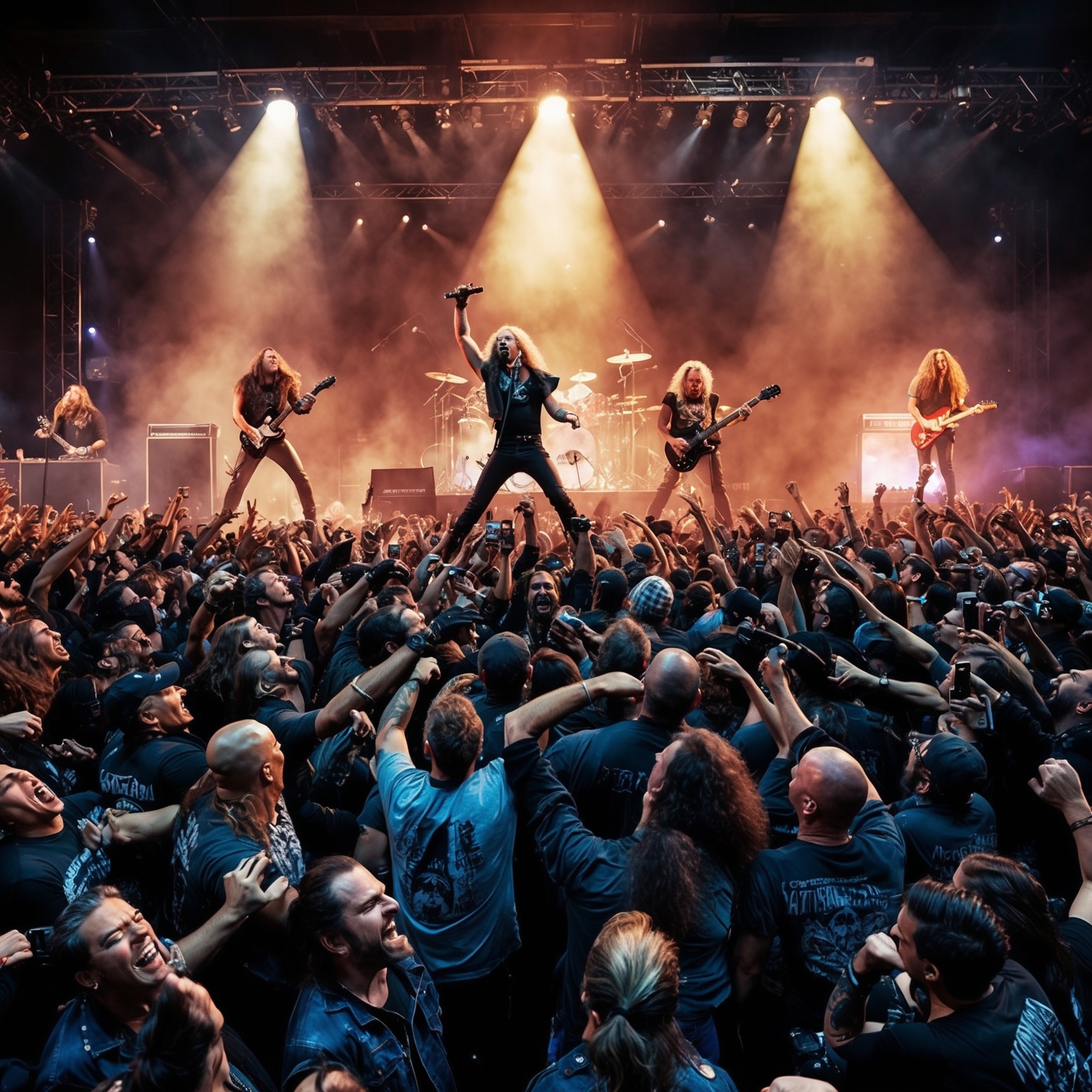
Released on September 27, 1984, as part of Metallica’s iconic album Ride the Lightning, “For Whom the Bell Tolls” has become a staple in the heavy metal genre. It’s intriguing to explore, however, that despite its immense popularity and influence, the track itself did not make a significant impact on mainstream charts initially. At the time of its release, the heavy metal scene was still finding its mainstream footing, and Metallica’s work was considered a powerful underground movement.
Interestingly, while the song did not chart on major lists like the Billboard Hot 100 at its release, it played a crucial role in defining Metallica’s path to stardom. Unlike other commercial hits of its time, “For Whom the Bell Tolls” found its resonance in live performances and became a concert staple. It was an emblem of the band’s raw power and musical integrity, ensuring its place in the heart of heavy metal fans around the world.
In terms of critical reception, the track was lauded for its thematic depth and innovative structure. It didn’t conform to the pop or commercial formulas dominating the scene in the mid-80s, which allowed it to become a defining anthem for metal aficionados. Over time, as the cultural appreciation for Metallica grew, “For Whom the Bell Tolls” has been included in various ‘Greatest Metal Songs’ lists and has amassed considerable streaming numbers, ensuring its lasting legacy in the pantheon of rock music.
Exploring the Visual Journey of ‘For Whom the Bell Tolls’
Delve into the dynamic world of ‘For Whom the Bell Tolls,’ where fan videos and live performances bring visual life to Metallica’s powerful track.
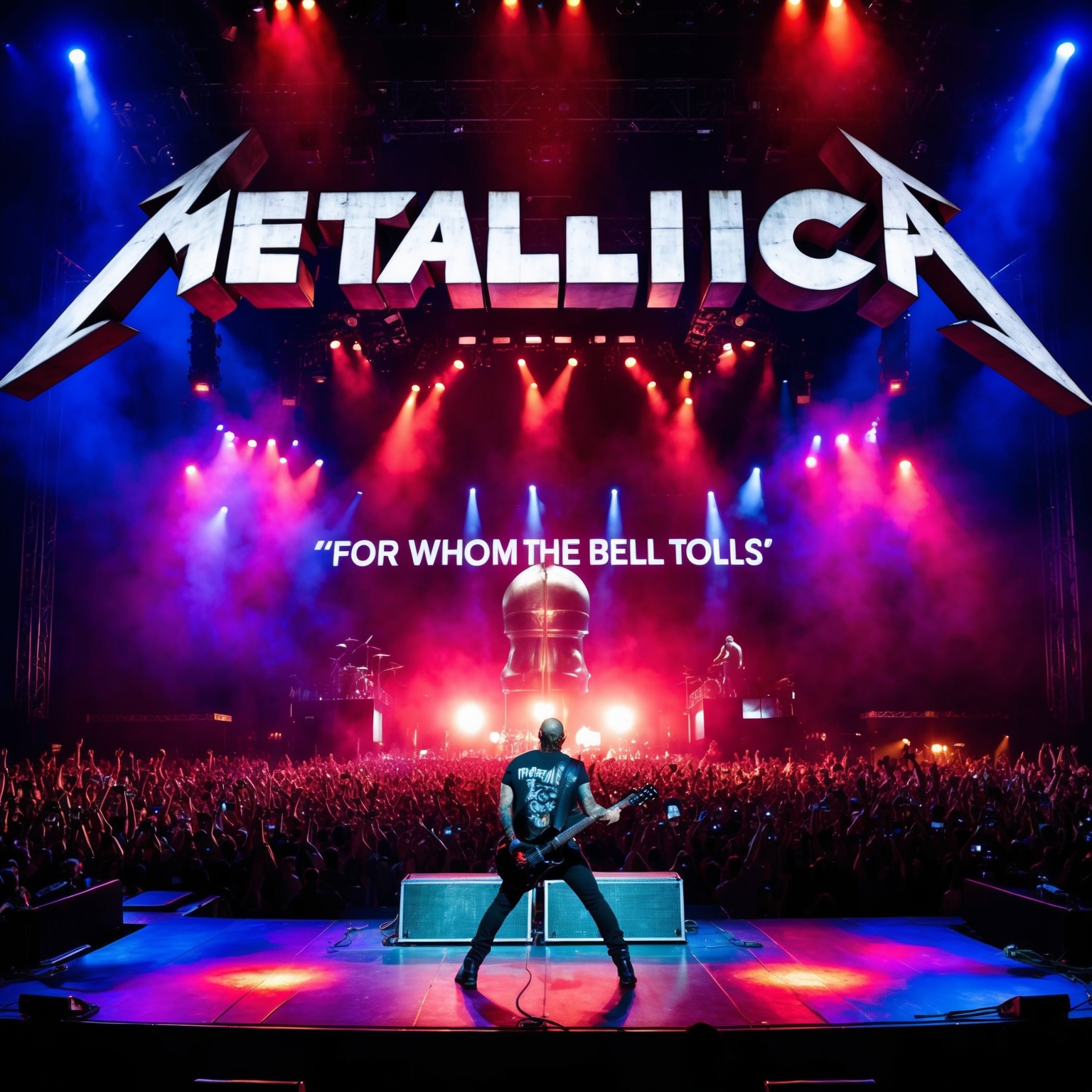
“For Whom the Bell Tolls” might not have an official music video in the conventional sense, but its legacy is deeply intertwined with various forms of visual narratives, whether through fan-made creations or electrifying live performances. Metallica’s explosive concerts and their ability to visually encapsulate the energy of the track are notable. During live shows, the band often uses lighting and stage effects that complement the song’s heavy themes, creating an immersive experience for the audience. The visuals of these performances have been captured in concert films and live recordings, giving fans a taste of the song’s raw power.
While concert footage fills the gap left by the absence of an official music video, various fan videos and animations have sprouted across digital platforms. These fan creations often pull from Ernest Hemingway’s novel, from which the song takes its name, exploring themes of conflict and existential dread. They creatively stitch together historical footage, animations, and even clips from war films to express the somber and haunting mood of the lyrics.
The reception to the song’s visual interpretations has been immensely positive, primarily because of the song’s dynamic nature. While no single music video exists, the sheer volume and variety of fan interpretations speak to the song’s lasting impact. These visual representations maintain Metallica’s powerful aesthetic while allowing room for creativity among the fans, contributing significantly to the song’s enduring popularity. It’s a testament to how music can be transformed into a multi-sensory experience even without an official video.
Dissecting The Musical Blueprint of ‘For Whom the Bell Tolls’
Explore the intricate musical structure of Metallica’s epic ‘For Whom the Bell Tolls’, unraveling its key elements, instrumentation, and place in the band’s evolving discography.

Released in 1984 as part of Metallica’s monumental album Ride the Lightning, ‘For Whom the Bell Tolls’ stands as a poetic symphony of metal brilliance. The song is structured around a somber and foreboding framework, rooted deeply in the key of E minor. E minor is often chosen for its versatile ability to convey both tension and melancholy, fitting perfectly with the song’s existential themes.
The chord progression predominantly revolves around power chords, a staple in Metallica’s repertoire, which serves to anchor the song’s intense atmosphere. Driven at a steady tempo of approximately 114 beats per minute, the pacing strikes a balance between aggression and reflection, allowing the depth of the lyrics to shine through.
The melody is hauntingly memorable, supported by harmonious interplays between guitarist Kirk Hammett’s piercing solos and James Hetfield’s rhythmic prowess. Cliff Burton’s bass lines add a unique texture, creating a waterfall effect when combined with the riffs, while Lars Ulrich’s drumming contributes heavily to the track’s dynamic shifts with controlled aggression.
In terms of instrumentation, each member plays a critical role. Burton’s bass, notably using a wah-wah pedal, introduces a distinctive voice-like quality that elevates the song beyond conventional metal. This track represents an evolution in Metallica’s musical journey, from their raw beginnings to a more refined sound that experiments with structure and sophistication.
When considering its context within Metallica’s discography, ‘For Whom the Bell Tolls’ marks a pivotal moment of growth. It’s a departure from their debut album’s frenetic energy and heralds a period where lyrical themes and musical compositions become more intricate. The lyrical narrative about the futility of war is reflected in the complex musical arrangements, setting a standard for future projects.
Interestingly, the recording sessions at Sweet Silence Studios in Copenhagen, under the guidance of producer Flemming Rasmussen, were rife with creativity. Anecdotes suggest that the initial creation of the bell that inspired the title was born from clanging an anvil, further embedding a layer of industrial authenticity into the track.
Dissecting Metallica’s “For Whom the Bell Tolls”: A Lyrical Journey Through War and Existentialism
Explore the profound themes and imagery in Metallica’s “For Whom the Bell Tolls,” as it masterfully tackles the futility of war through vivid storytelling and rich literary devices.
On the hill in the early day
Constant chill deep inside
Shouting gun
On they run
Through the endless grey
On they fight
Are they right
Yes, but who’s to say?
For a hill men would kill
Why?
They do not know
Stiffened wounds test their pride
…
******* This Lyrics is NOT for Commercial use *******
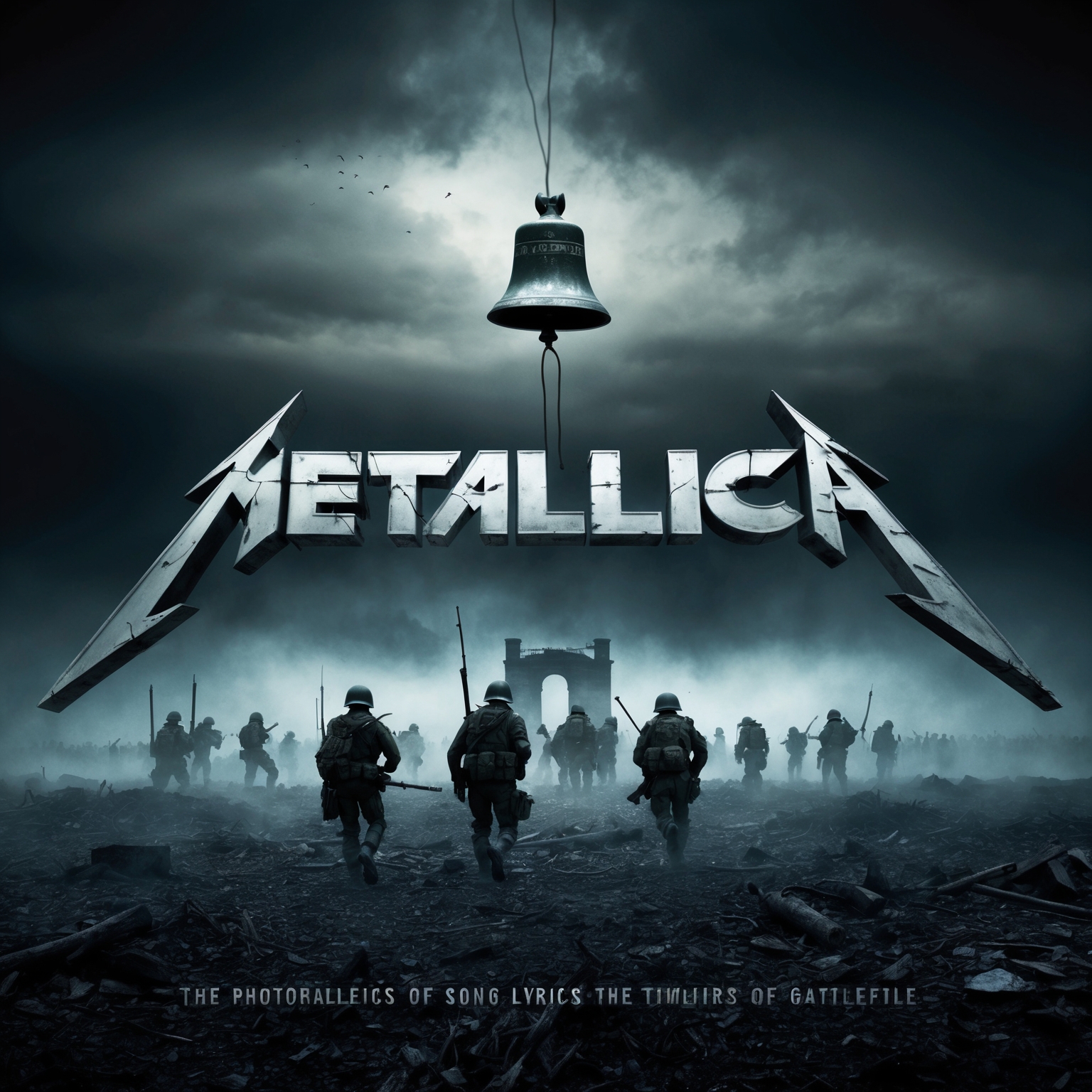
Metallica’s “For Whom the Bell Tolls” strikes a profound chord in the realm of heavy metal through its evocative exploration of wartime themes and existential questions. The song’s lyrics provide a narrative that delves into the futility and senselessness of war, echoing sentiments that are both timeless and universal. From the outset, the lyrics invite listeners to envision a battle-scene, painting a vivid picture of young soldiers fighting on a hill, devoid of a clear understanding of their purpose. The song effectively uses stark imagery to invoke the bleakness and chaos of war, leaving a chilling impact on its audience.
The narrative style employed in “For Whom the Bell Tolls” is particularly striking, as it adopts a third-person perspective. This detachment allows listeners to witness the unfolding events on the battlefield, adding to the song’s gravity. The structure of the lyrics, with its repetitive questioning of the soldiers’ motivations, further underscores the futility and confusion experienced during war. By constantly challenging the purpose of the battle, the song amplifies its existential themes, resonating with audiences who ponder the larger questions of life and conflict.
In addition to strong storytelling, the song’s lyrical quality is enhanced through the use of various literary devices. Metaphors and alliteration pepper the lyrics, creating a rhythmic cadence that mirrors the relentless march of soldiers. The phrase “endless grey” is a striking example, capturing the indistinct and monotonous horrors of war. Moreover, “For Whom the Bell Tolls” draws on cultural references, with its title and themes borrowed from Ernest Hemingway’s novel of the same name. This allusion bridges literature and music, deepening the song’s impact by framing the narrative within a broader artistic tradition.
?? Rock trivia time! For Whom the Bell Tolls opens with bells recorded by clanging an actual anvil! Metallica knows how to make metal live! #MetallicaMagic https://bit.ly/3ORY5fC
Click to Tweet

